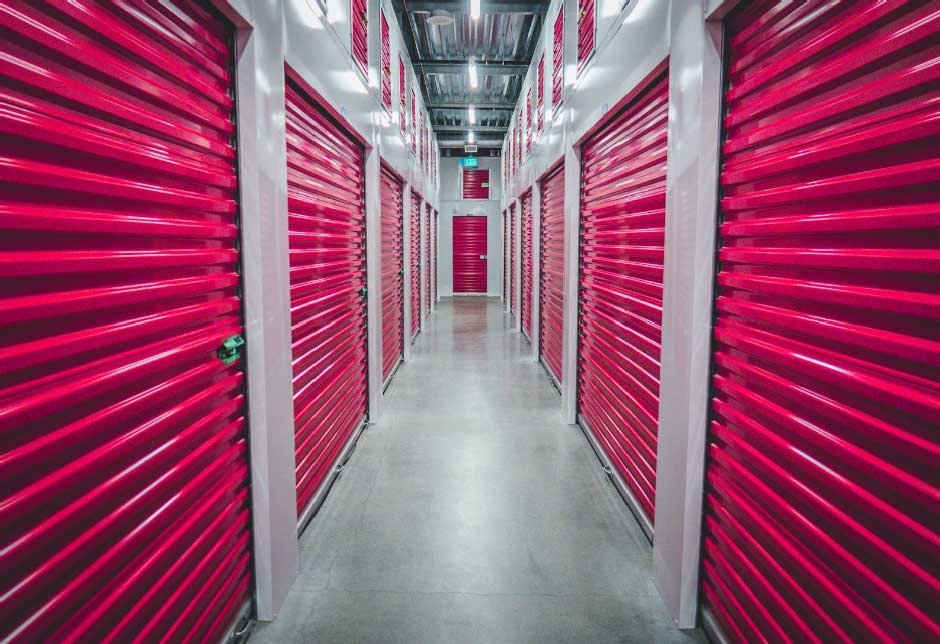Skip to the good bit
ToggleStorage meant stuffing things under the bed, into an attic, or playing the annual game of “Where did I put that box labeled Christmas lights?” Fast forward to 2025, and storage doesn’t just sit quietly in a corner. It thinks, it adapts, and it talks back.
Welcome to the world of smart storage.
The global smart home market, which includes smart storage, hit $158 billion in 2024 and continues to rise. People want homes (and garages and offices) that work smarter, not harder, and modern storage solutions are leading the charge.
So let’s pop open the digital toolbox and explore how smart storage systems are reshaping the way we stash our stuff.
Digital Meets Practical
Today’s storage solutions do more than hold your stuff. They manage it. Imagine opening your closet and seeing a screen that tells you which outfits you haven’t worn in six months. Or scanning your pantry to reveal what’s about to expire. That’s not science fiction anymore. That’s Tuesday.
Smart storage systems rely on:
- Sensors to detect usage, weight, and presence of items
- RFID and barcodes to track inventory
- Apps and cloud connectivity for remote management
- AI and machine learning to suggest organizational tips, and even buying habits
And let’s not forget the part where your fridge texts you because you forgot the milk. Again.
Closets That Curate
Let’s start in the bedroom. Modern smart closets can now:
- Sort clothing by season or style
- Track what you wear (or ignore)
- Recommend outfits based on weather, calendar events, or even mood
Some systems, like LG’s Styler, even refresh your clothes using steam and light. That’s right, your closet now moonlights as a part-time dry cleaner. So much for “just throw it on a chair.”
Then there’s the Samsung SmartThings Clothing Care, which connects your washer, dryer, and closet for a fully integrated experience.
These systems notify you when your outfit finishes drying and suggest what to wear next. If only they could break the news gently about that shirt that shrank two sizes.
Kitchens with a Brain
If you’ve ever stared blankly into the fridge wondering what to cook, smart pantry and kitchen storage might be your new best friend.
Smart pantries track expiration dates, meal suggestions, and grocery lists. Apps like PantryCheck or KitchenPal let you scan products in and out, so you always know what’s hiding in the back behind the soy sauce from 2017.
Then there are smart fridges like Samsung’s Family Hub, which feature interior cameras, touchscreen shopping lists, and even recipe suggestions based on what’s inside. No more buying that fifth bottle of sriracha “just in case.”
Even dry storage hasn’t been left out. Companies like Ovie Smarterware offer food storage containers that light up and sync with your phone, reminding you to eat those leftovers before they become a science experiment.
Garages: From Clutter Zones to Command Centers
Garages used to be the graveyard of broken tools, mysterious bins, and that treadmill you swore you’d use. With options like Wheekeep, smart storage is redefining garage organization—offering sleek, stackable systems that not only declutter your space but also integrate seamlessly with your smart home setup. Now, smart storage turns garages into organized, optimized spaces that might even impress your dad.
Brands like Gladiator and NewAge Products offer modular wall systems that come with app-based tracking. You can log your tools, get reminders to return borrowed items (we’re looking at you, Steve), and even plan new layouts digitally before lifting a finger.
And for the serious DIYers? Robotic tool chests like Tooli use RFID to locate tools and notify you if something’s missing. It’s like having a tiny, judgmental foreman inside your cabinet.
Office Storage That Thinks for You
Remote work exploded post-2020, and with it came the challenge of turning homes into productivity hubs. Smart office storage brings organization and digital integration together.
Smart filing cabinets can:
- Scan and categorize documents automatically
- Lock and unlock based on biometrics
- Sync with cloud storage for real-time access
Companies like Poppin and Steelcase now include charging docks, cable management, and even air purifiers inside storage units. Apparently, your filing cabinet cares about your lungs, too.
Meanwhile, AI-enhanced desk drawers can now adjust based on the workday. Stash away distraction items during work hours and open access for creative tools during brainstorming sessions. It’s like Marie Kondo meets Siri.
The Hidden Tech: Sensors, AI, and Connectivity
What makes smart storage “smart”? Here’s a peek under the hood:
1. Sensors Everywhere
Pressure, motion, weight, and temperature sensors monitor what’s inside. A spice rack might know you’ve run out of paprika before you do.
2. Artificial Intelligence
AI analyzes your habits and preferences to offer smarter recommendations. It might suggest rearranging your closet based on how often you reach for certain outfits. It might also suggest counseling if it notices you wear sweatpants 24/7.
3. Connectivity and Cloud Sync
Most smart systems now integrate with Alexa, Google Assistant, and Apple HomeKit. So when you shout “Where are the batteries?” into the void, your storage might actually answer.
Commercial and Industrial Storage
Homes aren’t the only ones getting smarter. Warehouses and retail spaces now rely heavily on smart inventory systems in their storage facilities. Think:
- Amazon’s Kiva robots, which move shelves around based on order flow
- Automated vertical storage systems like the Modula VLM that maximize space in small areas
- IoT-based bins that alert suppliers when stock gets low
Even small businesses use smart shelves that scan products and adjust prices or promotions in real-time. It’s like magic but with Wi-Fi.
Downsides? Yep, a Few
Smart storage isn’t all glowing lights and digital bliss. A few caveats:
- Cost: These systems don’t come cheap. A smart fridge can run over $3,000, and even a basic smart pantry setup might cost more than a weekend in Paris (flights not included).
- Privacy concerns: The more your storage knows, the more it can share, sometimes unintentionally.
- Tech dependency: When the app crashes or the Wi-Fi dies, you’re back to guessing where you put the screwdriver.
Also, let’s be honest: if your closet starts recommending “new looks,” it might be time to ask who’s really in charge here.
Final Thoughts
Smart storage redefines how we interact with our spaces. It goes beyond neatness and dives into lifestyle, saving time, reducing waste, and yes, maybe even helping us dress better.
As homes and offices get smarter, so will the things that keep them organized. The best part? No more yelling “Where did I put that?!” into the void.
Now you can just ask your storage system, and it might answer.







